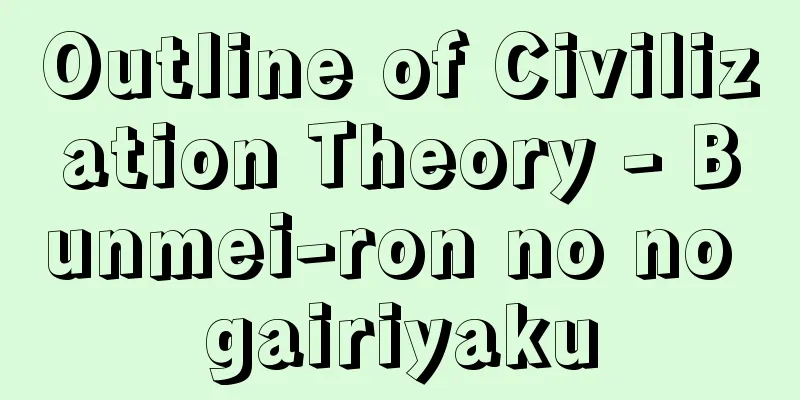Reisen - Reisen

|
Year of death: Tencho 4 (827) Year of birth: Tenpyo Hoji 3 (759) He was an esoteric Buddhist monk who traveled to China in the early Heian period, and was the only Japanese to be given the title of "Triple Treasure." He was the son of Okinaga no Mahito Tonemaro of Inukami District, Omi (Taga Town, Inukami District, Shiga Prefecture). He entered Reisan-ji Temple at a young age, and became a monk at Kofuku-ji Temple at the age of 18. In Enryaku 23 (804), he traveled to China with Kukai, Saicho, and others, and became a disciple of the Indian monk Prajna at Chang'an Risen-ji Temple, where he studied Yogacara. In Kōnin 2 (811), he translated the Shinjyōkankyō Sutra from Sanskrit. He was appointed as a Tripitaka monk, and became one of the ten naigufu zen priests in charge of Buddhist affairs at the Imperial Court. In the same year, he moved to Mount Wutai, fearing the persecution of Buddhism. In Tenchō 2 (825), Emperor Saga commended his achievements and gifted him 100 ryo of gold dust. In return, he sent him relics, the Shinjyōkankyō Sutra, and other items. In the fourth year of the same year, Emperor Junna bestowed him with 100 ryo of gold dust, but he was poisoned by someone shortly after. In his later years, he seems to have expressed a strong desire to introduce the secret method of national protection, "Taigensuiho," to Japan. The "Shinkokukankyo" is a sutra that praises the fourfold grace of parents, living beings, the king, and the Buddha, the Dharma, and the Sangha, and there is strong evidence that Kukai popularized it as being suited to the conditions of Japan. <References> Horiike Shunho, "Kofuku-ji's Reisen Sanzo and Jokyou" (Rekishi Hyoron, No. 105), Yabuta Totaro, "Reisen Sanzo" (Masaki Akira) Source: Asahi Japanese Historical Biography: Asahi Shimbun Publications Inc. About Asahi Japanese Historical Biography |
|
没年:天長4(827) 生年:天平宝字3(759) 平安初期入唐し,日本人としてただひとり「三蔵」号を与えられた密教僧。近江犬上郡(滋賀県犬上郡多賀町)の息長真人刀禰麻呂の子。幼くして霊山寺に入り,18歳のとき興福寺で出家。延暦23(804)年空海,最澄らと共に入唐し,長安醴泉寺のインド僧般若の弟子となり唯識を学ぶ。弘仁2(811)年『心地観経』を梵文から翻訳。三蔵に任じられ,宮中の仏事を司る内供奉十禅師となる。同11年仏教弾圧を恐れ五台山に居を移す。天長2(825)年嵯峨天皇が活躍を讃えて砂金100両を贈る。返礼に舎利や『心地観経』などを送付。同4年淳和天皇から砂金100両を贈られたが,まもなく何者かに毒殺された。晩年,護国の秘法「太元帥法」の日本伝来を念願していたらしい。『心地観経』は父母,衆生,国王,仏法僧の四恩を讃える経典で,空海が日本の国情に合うと流布した形跡が濃い。<参考文献>堀池春峰「興福寺霊仙三蔵と常暁」(『歴史評論』105号),籔田藤太郎『霊仙三蔵』 (正木晃) 出典 朝日日本歴史人物事典:(株)朝日新聞出版朝日日本歴史人物事典について 情報 |
>>: Liangzhe (English spelling)
Recommend
Kiss - Huh
A tubular structure that protrudes from the mouth...
Kushimoto [town] - Kushimoto
A town in Higashimuro District, at the southern ti...
Horaku - Kogaku
〘Noun〙 Music of the ancient northern Hu country of...
Bank Joint - Ginkou Goudou
...In Germany, concentration took various forms, ...
İznik (English spelling)
A town in northwestern Turkey. Originating from th...
Riverbank cultivation
…This type of agriculture is also called by diffe...
Vernacular novel - Hakuwa Shosetsu
A Chinese novel written in colloquial language. Sp...
Pre-Raphaelite Brotherhood
A group of young artists formed in London in 1848...
early modern
...Therefore, regardless of the nomenclature, the...
EMU - EMU
European Monetary Union : Economic and monetary in...
Volume 1 - Jokan
〘Noun〙 (formerly called "jogan") The fir...
surgeon-fish
...If you're not careful, these protrusions c...
Sassoon, F. (English spelling) SassoonF
...A prominent British Jewish family whose founde...
Iin
…In Chinese poetry, this refers to a poem that us...
Social mobility
It means a change in an individual's social st...








![Saga [town] - Saga](/upload/images/67cba74dd9e85.webp)
